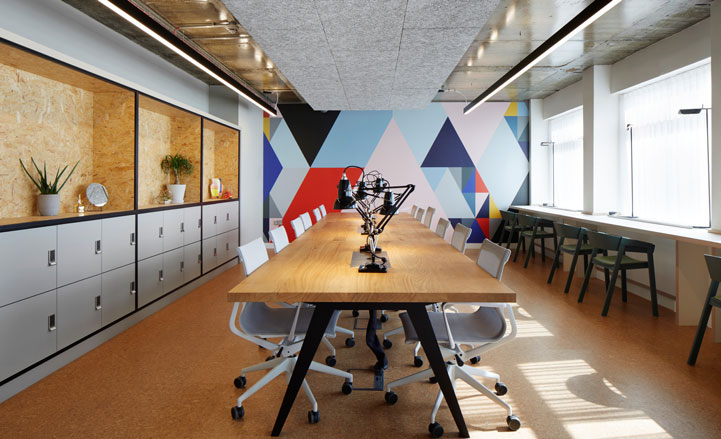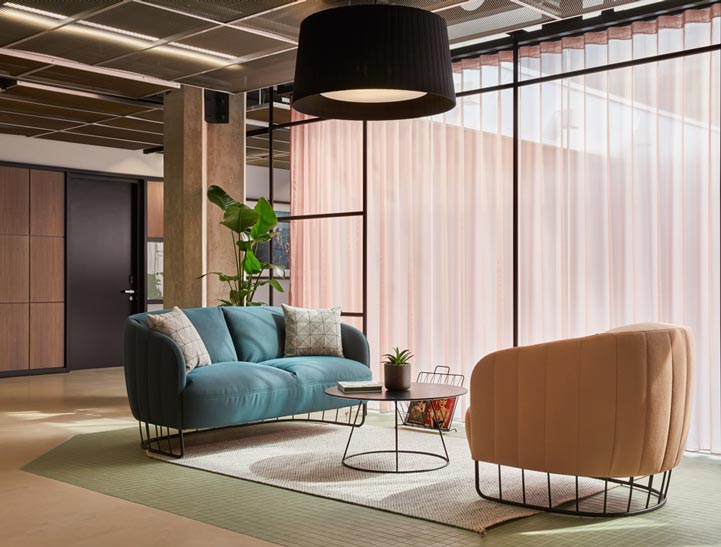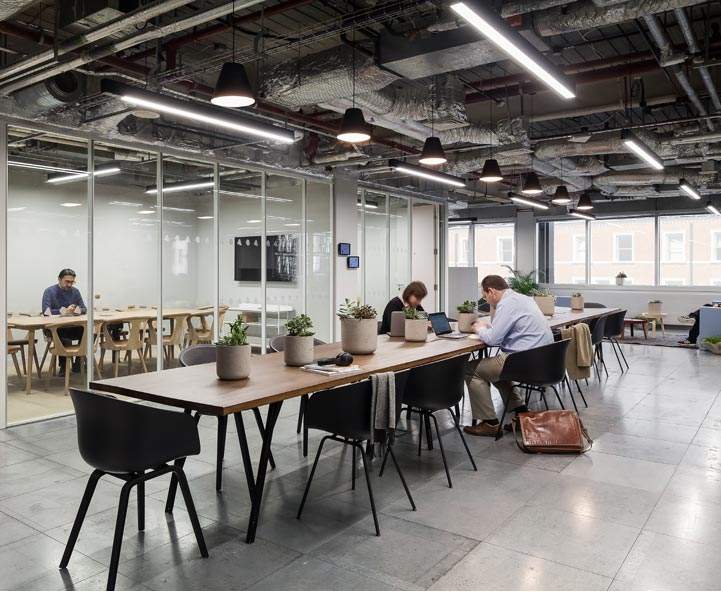The importance of offices: What are the future prospects?
The quantum and demand for office space and offices generally has been a key aspect of the debate since the onset of Covid-19. There has been an acceleration into a future that many had already predicted, and some had already acted upon.
This experience of widespread working from home (WFH) has allowed both individuals and companies to understand both the benefits and the challenges of different working locations and strategies. From our survey, completed during the initial lockdown in 2020, 47% of respondents believe the office will 'always' be important for a corporate, and 42% believe the office will remain a necessity in the short term. However, this ‘middle’ 42% are effectively ‘floating voters’, and this may have consequences longer term for office markets generally, particularly in terms of the likely need for more flexible workspace options.
Savills completed a survey of landlords during the latter part of 2020 to gauge their views and attitudes towards the flexible workspace sector. In total, 24 landlords, including fund/asset managers, REITs and private owners responded. In total, the numbers of properties held by the respondents amounted to over 4,000 by number, but over 438m sq ft in terms of total size. The questions were posed about the impact of the flexible office sector and the attitudes towards the sector in general.
We estimate that the total holding of flexible workspace, by the respondents to the survey, amounts to around 2.5m sq ft.
The initial reaction to the pandemic, in terms of the impact on the need for commercial workspace, was how far will demand fall and will employees ever return. Economic sentiment was impacted negatively and WFH became the key immediate trend and panacea for accommodating the office workforce in the future. What has emerged over the past 10 months is that the acceptance of WFH has improved, but equally, the importance of having an office is also critical.

Alpha Works, Alpha Tower
The importance of offices
There is now a push for more remote working but in tandem with maintaining an office HQ or branch location(s). The notion of hybrid working (home and office) has emerged, and the flexible workspace market certainly has a major role to play in delivering such a strategy.
In the Savills survey at the start of lockdown, one aspect was to understand the role of the office in the future and, ultimately, the likely corporate demand for office real estate. Savills also asked the question of 'what is the office perceived to be for?'
Our survey presented the views of the respondents on what places they feel are best for which tasks. The choice was simple: home, office, or a mixture of both. The data shows that the majority of office employees believe that a mixture of both, a hybrid, is the likely option going forward, for most variables. However, to glean some insight and advice from the survey results, it’s worth concentrating on the significant differences between the home and the office.
As shown in the chart below, personal growth is obviously vitally important to most office workers. Of the eight factors shown, the ‘company office’ is the preferred location for the majority. Providing an environment for concentration is clearly perceived to be best met at home; however, revised specification of office fit-out can easily accommodate this more.
What was most important is the result showing that personal factors around networking, management, career advancement being best achieved in an office environment.
The importance of the office is not just for the employee, but also for the company management, by maintaining the ‘right’ culture, which can be delivered and achieved by the physical workspace. The fear around homeworking is a resultant growth of subcultures and, even worse, counter-cultures. A company that becomes dysfunctional will not deliver the growth expected and/or required.
So delivering what the employee wants, as well as maintaining corporate culture and values, the hybrid model has to evolve quickly. The flexible workspace sector has a clear role to play.
The future of flex
As well as the evolution of this hybrid model, the survey from lockdown also reviewed the locations, outside of the office, where office-based employees were working.
There is not always a clear choice between home and office. What the survey data clearly demonstrated, very clearly, was the wide variety of locations that provide a place for work. As shown by our survey results, one in five office workers are working whilst in transit. This is shown in the chart below.
What is also shown in the chart, and more pertinent to the flexible workspace sector, is the other working locations currently used. The survey data demonstrates the opportunity for the flexible market, including serviced office and flexible workspace, to capture those 40%+ of respondents, who, when not working at home or in the office, are working in hotels, coffee shops and libraries. Flexible workspace is a solution to this.

MYO, Victoria Street
What drives the growth of demand?
Assessing the capital raising environment for those businesses that will have a stronger appetite for flexible workspace is important.
The venture capital (VC) data provides a good indication of the strength of the UK’s business growth ecosystem and likely demand for flexible floorspace. The positive news is that from looking at the level of capital raised across the UK, for companies headquartered in the UK, it amounted to £7.6bn in 2020, involving around 2,350 deals. The data analysed for this is for deals up to the £50m level where, below this level, is where flexible workspace demand is likely to be stronger. So, despite the difficult year due to the pandemic, it is positive to see that the total for 2020 was 4% higher than 2019. For London, the similar data of deals (up to £50m) amounted to £4.5bn in 2020, which was a similar level to 2019. Why does this matter? Overall, growth in the startup and scale-up community are key drivers of flexible workspace demand. Over the past five years, the level of VC raised has risen by 18% per annum across the UK and 20% in London. This has driven the demand for more flexible workspace and will do so in the short-term.
For the start-up community, particularly in London, there is more evidence of smaller companies permanently adopting a hybrid office-and-home work model. Many are hedging their bets and keeping a smaller office obligation for occasional get-togethers. The flexible market clearly has a major role to play in providing the required office space. So, what are landlords' attitudes towards flexible space, which both they provide or lease space to specialist providers?

Uncommon, New Kings Road
The landlord survey results
Future appetite
The first part of the survey reviewed the future attitude of the landlords to flexible workspace. 29% of the respondents already operate a flexible offer, but the key result is the fact that 29% would 'like to' or 'are planning to' operate their own brand.
The current portfolio size, by square footage, of those respondents that 'are planning to' amounts to nearly 304m sq ft. This is more than the office stock of the City of London and West End of London office market.
An additional 1% of this 304m sq ft would be a sizeable addition to the stock of flexible workspace, and this is just based upon the responses that Savills received.
In the UK, using the latest Valuation Office Agency data, there is approximately around 956m sq ft of commercial office stock. The increasing sentiment towards a more flexible offering, discussed in the next section, could have a significant impact on the increased amount of flexible workspace in the future.

Storey, 2FA
Importance as part of the overall office offering
Another result of 29% is shown in the chart below, representing the share of respondents that consider a flexible workspace operator as being important within the office building. A third of the respondents also consider the presence of an operator as a 'nice to have'.
Additionally, in London, we watch with interest regarding the affordable workspace policy in the London Plan. The inclusion of an affordable and/or low-cost office offering in new office development could be seen as a beneficial offering by developers.
Attitude towards flexible workspace in a Covid-19 world
The survey responses show that two-thirds (67%) of the respondents remain the same or more positive towards flexible workspace operators. Of this total, 21% are more 'in favour' of the flexible workspace offer since the onset of the pandemic.
Looking further ahead, the chart below shows the higher degree of optimism towards the flexible office sector. On balance, 58% are more optimistic, with 21% 'undecided'. Therefore, 83% are neutral or higher, in terms of positive sentiment towards the sector.
Flexibility of lease terms
Do you expect your tenants to require more flexible lease terms going forward in terms of being able to book space on an as-needed basis?
A driver of this optimism may be linked to the fact that going forward, three-quarters of the respondents expect their tenants to require more flexible lease terms (see chart, below). Therefore, the provision of more flexible offering within their office buildings is expected to increase.
How much space for the flexible offering?
A question was asked as to what percentage of a single building of, say, 50,000 sq ft+, would you be comfortable being let to a flexible workspace provider.
In terms of the amount of space – within a single office building (50,000 sq ft or larger) that landlords would be comfortable with letting to a flexible workspace provider – the highest response was 10–25%.
Half of the respondents would be comfortable at this level (see chart, below). Again, this bodes well for further growth in the flexible workspace with the perception of investors that some form of flexible space within a building is now a necessity.
Attitude towards management agreements
This final section looks at landlords’ attitude to management agreements.
The key question was asking how open are you to considering a management agreement (receiving rent based on the revenue or profit of your tenant) with a flexible office operator? The first part of the data analysis shown in the chart below. There is a fairly even split between those respondents that are open or closed to the idea of management agreements – 41% are open to the idea, 39% are not.
There is no comparison available as to how this has changed over time, but it is expected that the openness of landlords has increased in the recent past. There will be a higher appetite to let vacant space, and landlords are also more likely to want to prosper from the rising level of flexibility required by tenants.
Since the onset of the pandemic, 54% are more likely to consider a management agreement, roughly half of which feel as though it's 'out of necessity', as shown in the chart below. This, again, reflects the view that flexibility for tenants will become increasingly important in the short term.
Key points
What are the top six takeaways from this survey?
- Covid-19 accelerated how and where we use offices for the individual and the company.
- Savills expects to see a rise in overall demand for flexible space – and this is the same for landlords – 75% expect tenants to ask for more flexible terms.
- Some landlords clearly adopting to this – 29% are planning to or would like to operate their own brand.
- For buildings at or above 50,000 sq ft, half of the respondents would be comfortable letting between 10% and 25% of the total to a flexible workspace provider. Going forward, it would be expected that all larger buildings, say 100,000 sq ft+, will have a flexible offering as standard.
- In the main, we expect most to enter the market via partnership in the form of management agreement. Few operators will take a lease, and the scale of resource and expertise required to launch a successful own brand of flex space will limit the number doing it themselves to start.
- Over the years, though, we expect more and more to begin building their own flex brands, learning from their partnerships with the operators.
